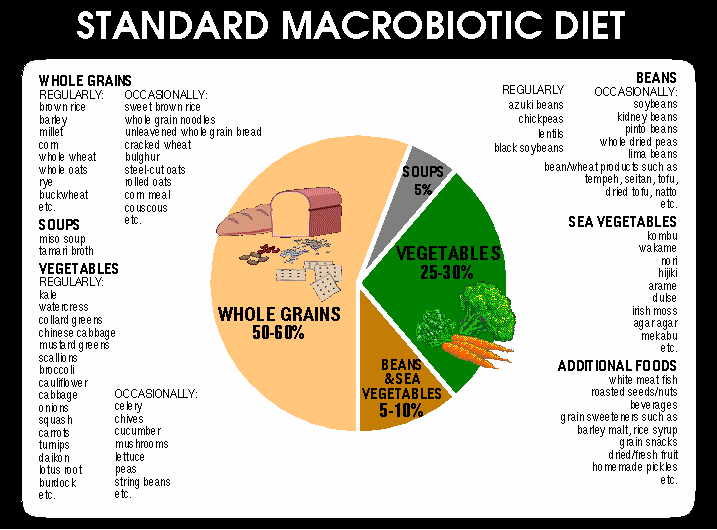What is Macrobiotics?
We have heard this term being tossed around a lot lately, but how many of us really understand what it is? What the diet is? How it is beneficial? Where it came from?
Here is a Crash Course of Macrobiotics…
Fact #1-For starters, lets break down the word.
Macro- means “large”
Bio- means “life”
Fact #2-A macrobiotic diet (or macrobiotics), a dietary regimen which involves eating grains as a staple food supplemented with other foodstuffs such as local vegetables avoiding the use of highly processed or refined foods and animal products. Macrobiotics also addresses the manner of eating by recommending against overeating and requiring that food be chewed thoroughly before swallowing.
How many chews per spoonful? Minimum for 100 please!!
Why so many chews?
Food's contact with saliva is not just important because it helps to lubricate the food, making it easier for foods (notably dried ones) to pass easier through the esophagus, but because saliva contains enzymes that contribute to the chemical process of digestion. Carbohydrate digestion begins with salivary alpha-amylase as it breaks down some of the chemical bonds that connect the simple sugars that comprise starches. Additionally, the first stage of fat digestion also occurs in the mouth with the secretion of the enzyme lingual lipase by glands that are located under the tongue.
Fact #3- What makes up a Macrobiotic Diet?
Some general guidelines for the Japanese style macrobiotic diet are the following (it is also said that a macrobiotic diet varies greatly, depending on geographical and overall wellness).
Well chewed whole cereal grains, especially brown rice: 40–60%
Vegetables: 25–30%
Beans and legumes: 5–10%
Miso soup: 5%
Sea vegetables: 5%
Traditionally or naturally processed foods: 5–10%
Fact #4- Macrobiotic Meals are based around the seasons, just like most restaurants. There are just a few more guidelines to follow. Check it…
Springtime:
Food with a lighter quality
Wild plants, greens, lightly fermented food, grain species, fresh greens
Light cooking style: steaming, cooking for a short time, etc.
When the Sun is a Blazing’:
Food with a lighter quality
Large-leaved greens, sweet corn, fruit, summer pumpkins
Light cooking style: steaming, quick cooking, etc.
More raw foods
Lighter grains, such as barley, and bulgur wheat
Once the leaves start to turn:
Food with a more concentrated quality
Root vegetables, (winter) pumpkins, beans, cereals, etc.
Heavier grains such as sweet rice, mochi and millet
Chilling Season:
Food with a stronger, more concentrated quality
Round vegetables, pickles, root vegetables, etc.
More miso, soy sauce, oil, and salt
Heavier grains such as millet, buckwheat, fried rice, etc.
Fact #5- Learn the to Balance the Yin and Yang
Japanese style Macrobiotics holds that some foods are over stimulating and can exhaust the body and mind. These are classified as extreme Yin (stimulating) in their effects:
Sugar
Alcohol
Coffee
Chocolate
Refined flour products
Very hot spices
Drugs
Chemicals and preservatives
Poor quality vegetable oils
Foods that are considered to be concentrated, heavy and dense create stagnation. These have Yang (strengthening, but stagnating effects if over-consumed).
Refined salt
Whole grains, vegetables, beans, sea vegetables, fruit, nuts, and seeds are thought to create balance. Foods such as these are used in a macrobiotic way of eating.





